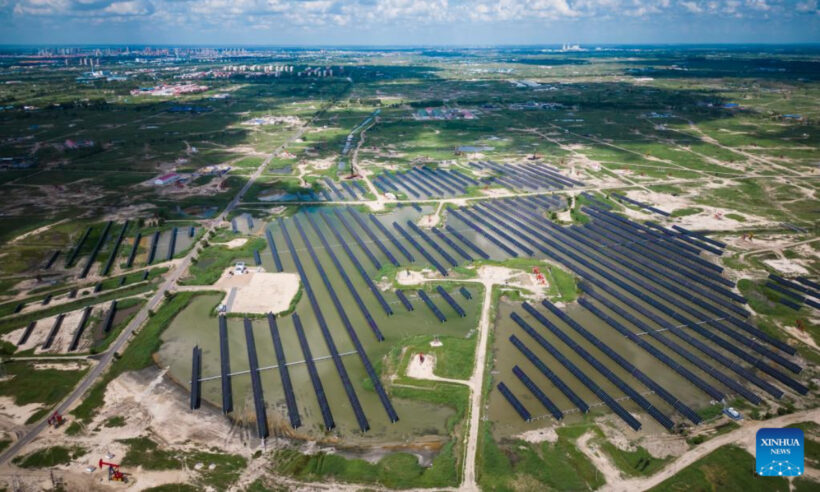The first half of 2024 saw new coal-fired power plant approvals fall significantly in China, a new report by Greenpeace East Asia said.
A series of permits in the past two years had raised concerns about how committed the country’s government was to limiting climate change, reported The Associated Press.
An analysis of project documents found that, from January to June, 14 new coal plants had been approved, with at least 10.34 gigawatts (GW) of total capacity. That reflects a 79.5 percent decrease from 50.4 GW during the same time period last year, a press release from Greenpeace East Asia said.
“China has pumped the brakes on coal so far in 2024. Wind and solar expansion continues to be strong. Since 2022, we saw a troubling trend of coal approvals increasing despite renewable energy growth which should displace coal. We may now be seeing a turning point,” said Yuhe Gao, project lead for Greenpeace East Asia, in the press release.
Of the new coal plant approvals in 2024, 71.4 percent were facilities that have the capacity to generate more than 660 megawatts (MW) of power, a concerning trend that Greenpeace East Asia first pinpointed last year. And of last year’s new projects, 70.7 percent had a capacity of more than one GW.
“These facilities are quite large. Coal facilities do not nimbly switch on and offline. And large facilities are particularly inefficient coming online in terms of time, money, or total emissions. This somewhat contradicts the stated purpose of using these facilities to support periods of peak energy demand. We are seeing a positive trend in decreasing new approvals. But the new approvals themselves are quite concerning,” Gao said.
Most coal approvals in 2024 were from a few provinces — 2 GW each in Jiangxi and Anhui and 1.32 GW in Xinjiang. For three years in a row, Anhui has made extensive new coal approvals, with 19.2 GW of approvals from January 2022 through June of this year.
China’s total coal capacity — 11.7 terawatts (TW) — for the first half of this year was exceeded by wind and solar for the first time. By the end of June, wind and solar made up 11.8 TW of total generation capacity.
By June of 2024, wind and solar capacity combined accounted for 38.4 percent of the country’s total power generation, with coal supplying 38.1 percent. During the first half of this year, 84 percent of all newly connected capacity came from wind and solar.
“Amid powerful wind and solar growth, connecting these new energy sources to China’s old, outdated grid remains a hurdle,” Gao said in the press release. “Any money spent building new coal power plants should really be spent improving renewable grid connectivity. It takes around 20 months for a coal plant to go online and that’s if construction isn’t delayed. Developing smart grid solutions to mitigate the burden of peak demand is not only a faster route to energy security, but it also paves the way for the energy transition.”
China is capable of peaking its emissions “well before” the end of the decade, Greenpeace said, with every degree of warming avoided preventing “compounding impacts of extreme weather on people’s lives, communities, wellbeing, and economies.”
Supporting provincial governments in developing load resource guarantee systems and supply-side structures would address short-term energy demand spikes during peak seasons. They are also more effective overall and faster to implement than constructing coal plants, which not only pollute the environment and increase global heating, but add economic and financial burdens to China’s energy transition.
“One question remains here. Are Chinese provinces slowing down coal approvals because they’ve already approved so many coal projects during this five-year plan period? Or are these the last gasps of coal power in an energy transition that has seen coal become increasingly impractical? Only time can tell. A rebound remains possible until there are firm measures put in place to directly prevent further coal expansion. And without more proactive support for wind and solar grid connectivity, a post-peak plateau remains a risk,” Gao said in the press release.
Cristen Hemingway Jaynes is a writer of fiction and nonfiction. She holds a JD and an Ocean & Coastal Law Certificate from University of Oregon School of Law and an MA in Creative Writing from Birkbeck, University of London. She is the author of the short story collection The Smallest of Entryways, as well as the travel biography, Ernest’s Way: An International Journey Through Hemingway’s Life.






